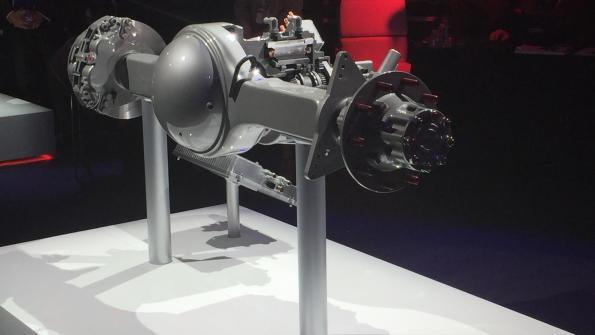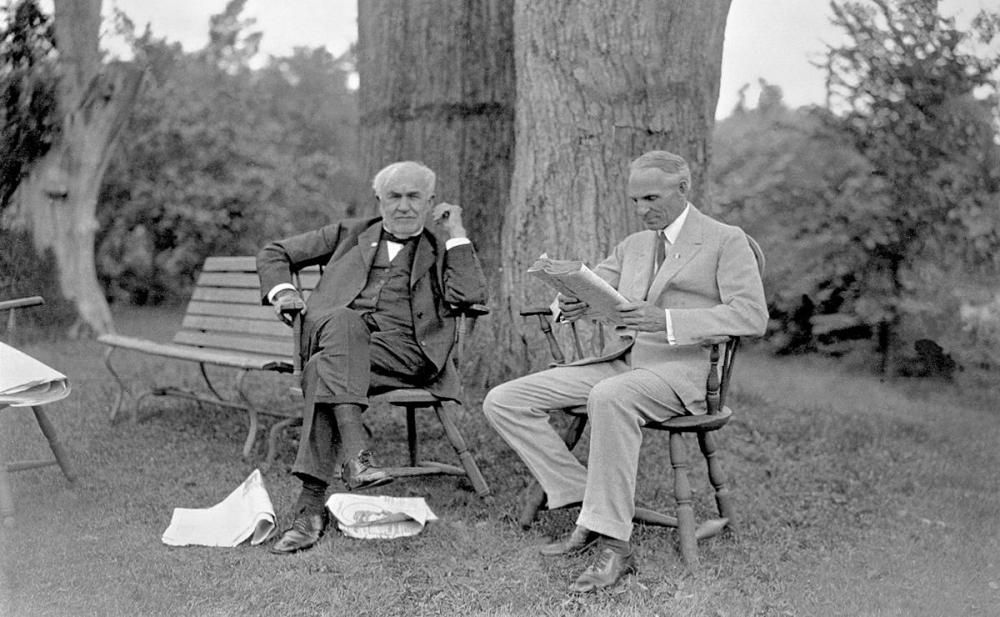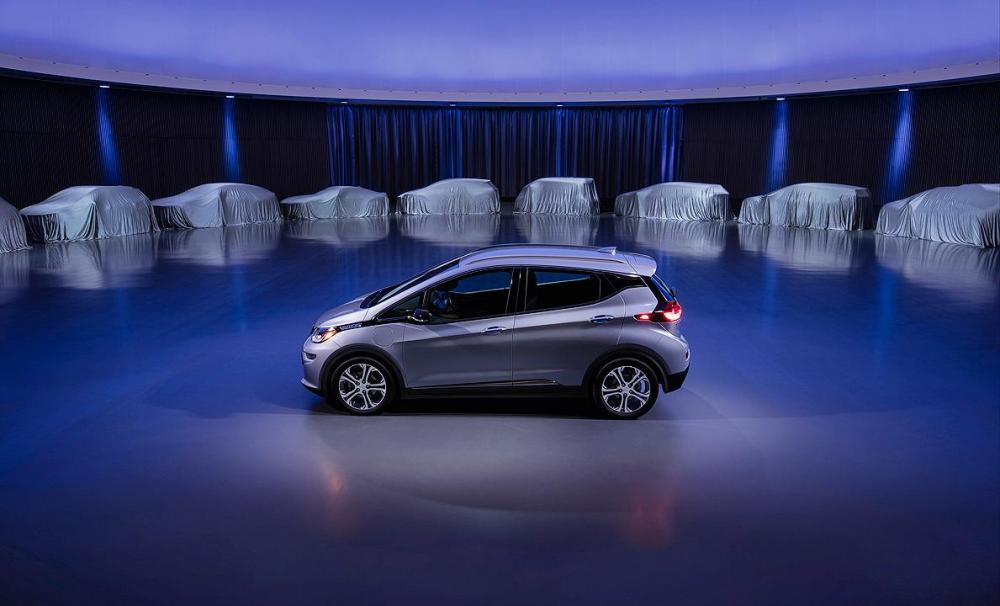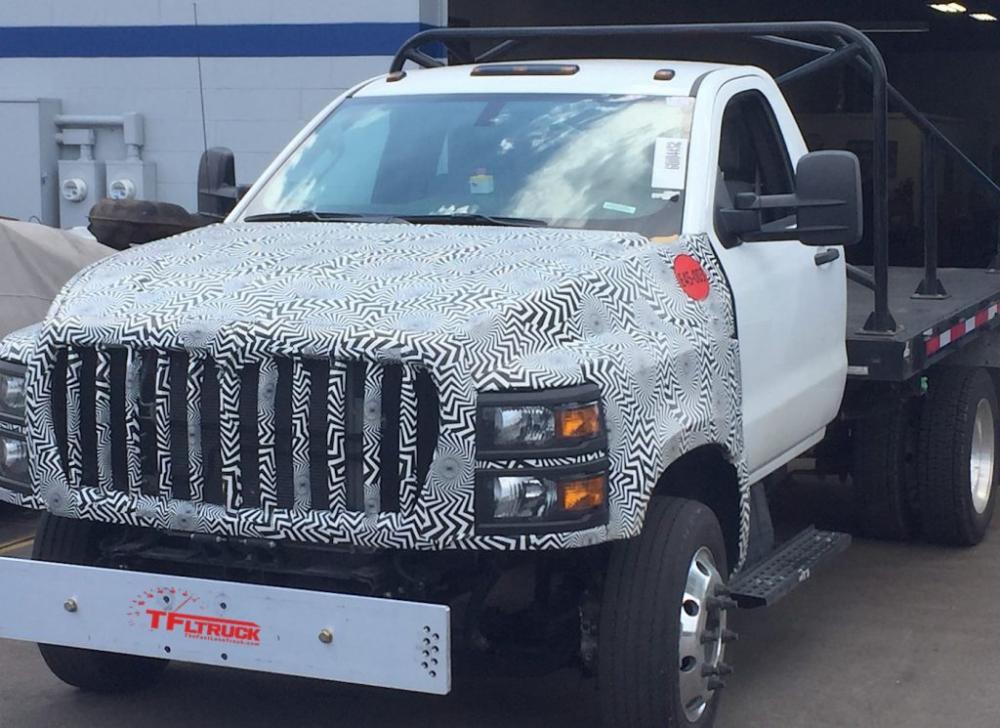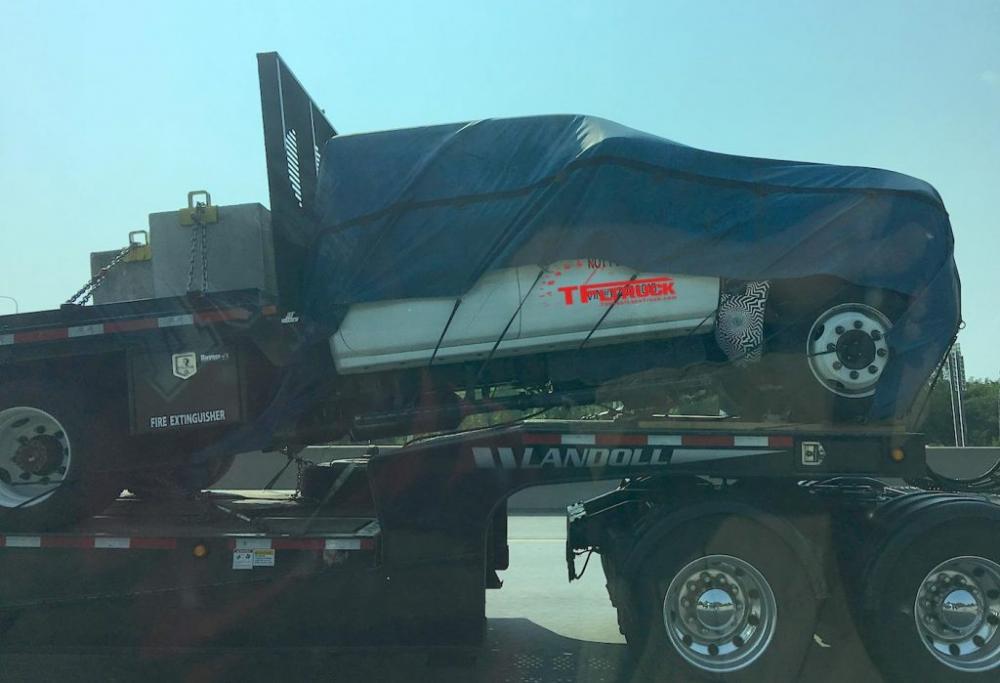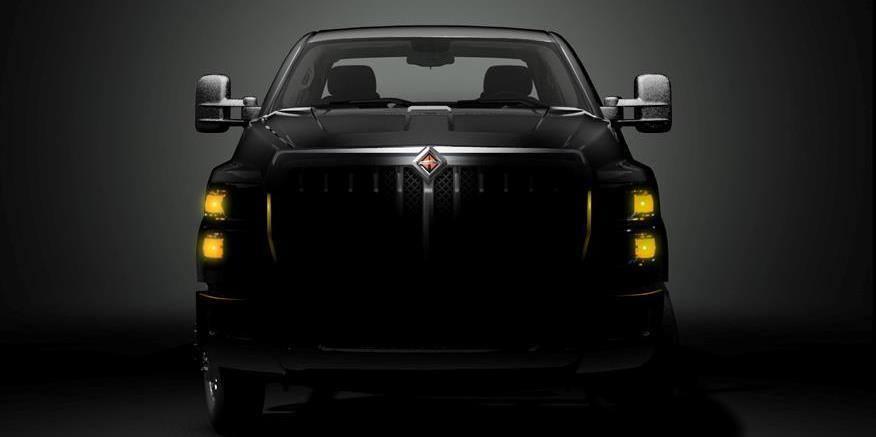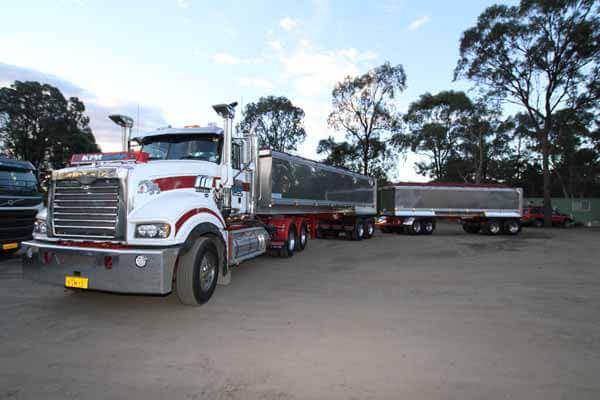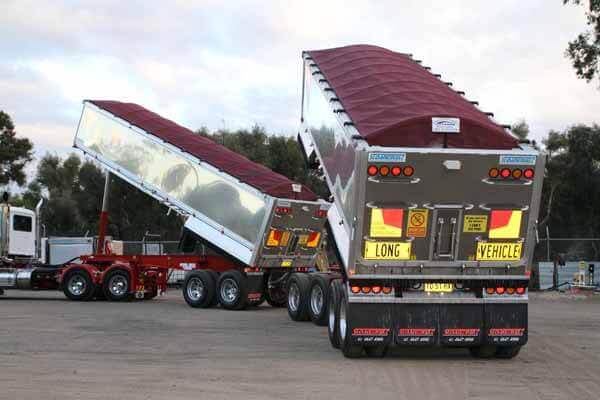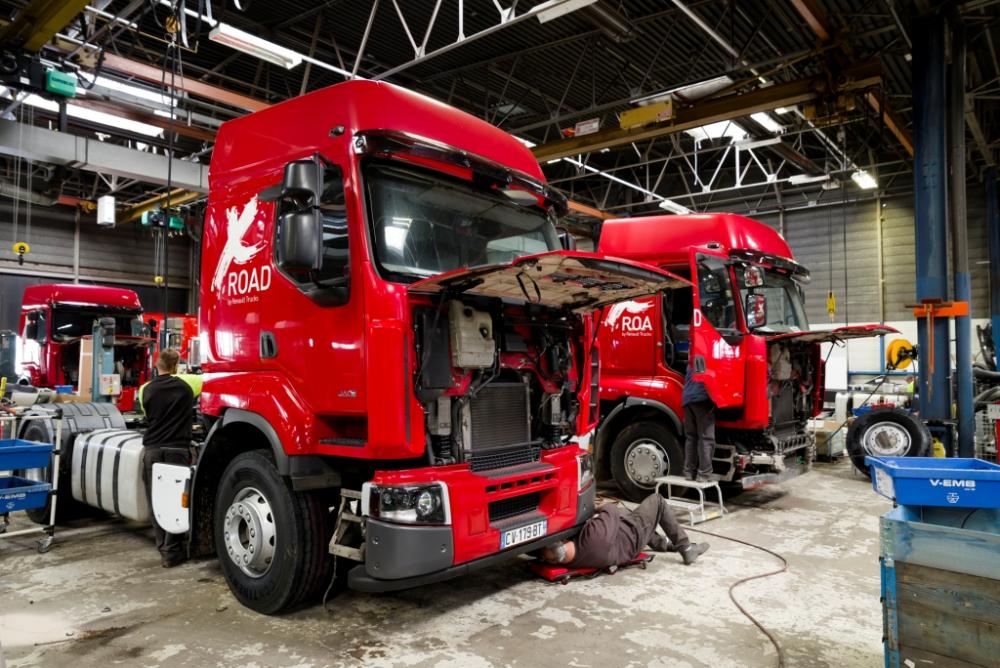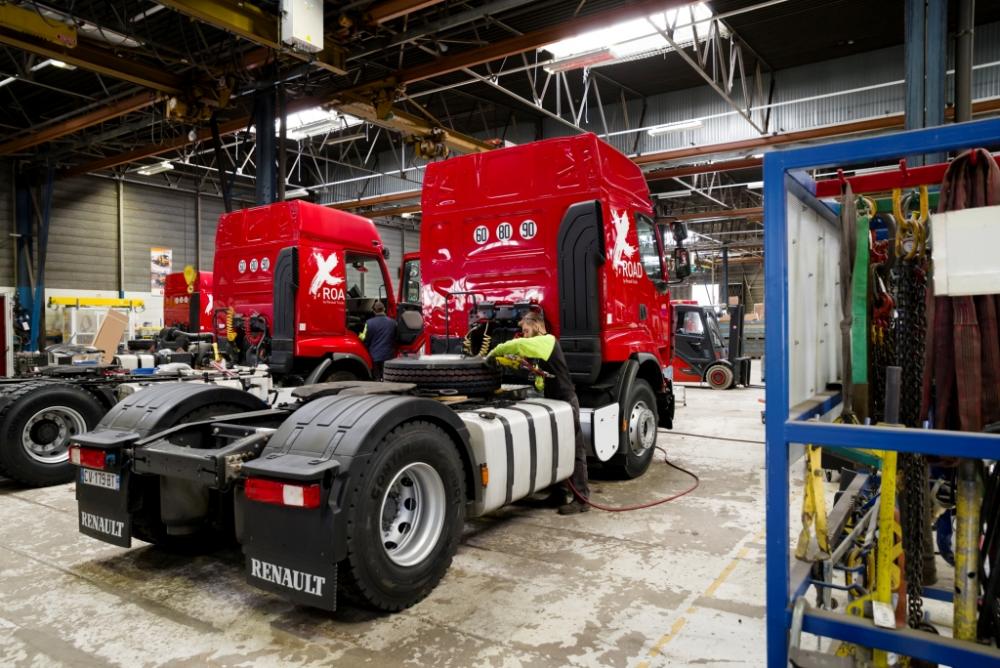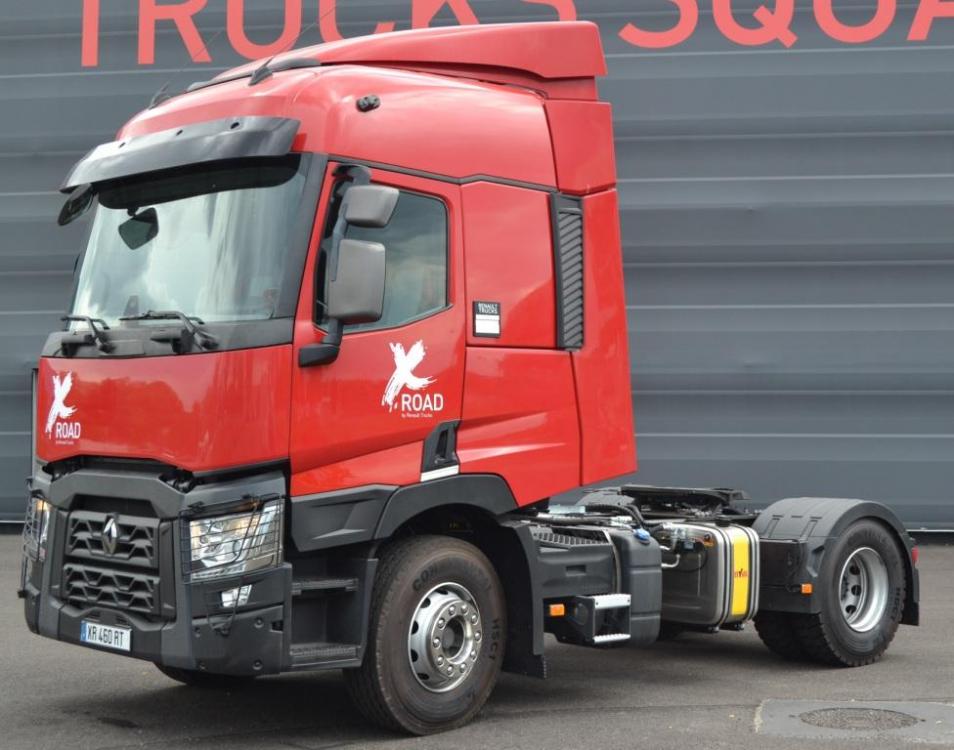
kscarbel2
Moderator-
Posts
17,893 -
Joined
-
Days Won
86
Content Type
Profiles
Forums
Gallery
Events
Blogs
BMT Wiki
Collections
Store
Everything posted by kscarbel2
-
Fleet Owner / October 2, 2017 Rapid decline in battery prices may help make electric power a much more affordable energy source for commercial vehicles. Manufacturers that build cars and heavy trucks alike increasingly believe electricity – whether as stand-alone power or as part of a hydrogen-based fuel cell system – will play a critical role in powering motor vehicles in the not-so-distant future. At the recent North American Commercial Vehicle (NACV) show, Jay Craig – president and CEO of Meritor – noted that the cost of a 100 kilowatt per hour (KwH) battery pack declined from $120,000 in 2009 to $25,000 today, with predictions that costs will drop to $15,000 by 2025. That low costs can make electricity a more affordable power solution for a heavy-duty vehicle, he explained, which is why Meritor is now developing a platform of electric drive axles and suspensions as well as supporting systems. “Essentially, we’re focusing on integrating an electric motor into the differential carrier,” Craig said during a presentation last week at the show. "As we look to future emissions regulations and our customers’ desire for more efficiency, we’re developing new and innovative solutions to expand our product portfolio." He added that Meritor’s flexible “e-carrier” design will be the foundation for various drivetrain configurations, including full electric, hybrid, single or tandem axles with various options based on application. But it’s not just heavy-duty vehicles that are being redesigned with electricity in mind. “General Motors believes in an all-electric future,” emphasized Mark Reuss, executive vice president of product development, purchasing and supply chain for General Motors this week. “Although that future won't happen overnight, GM is committed to driving increased usage and acceptance of electric vehicles through no-compromise solutions that meet our customers' needs,” he said. In the next 18 months, Reuss noted that GM will introduce two new all-electric vehicles based off learnings from the Chevrolet Bolt EV compact car. They will be the first of at least 20 new all-electric vehicles that will launch by 2023. However, given customers' various needs, he aid getting to a zero emissions future will require more than just battery electric technology. It will require a two-pronged approach to electrification — battery electric and hydrogen fuel cell electric depending on the unique requirements. That’s why GM also introduced SURUS this week, which is short for the “Silent Utility Rover Universal Superstructure.” SURUS is a fuel cell powered, four-wheel steer concept vehicle on a heavy-duty truck frame that’s driven by two electric motors. With its capability and flexible architecture, SURUS could be used as a delivery vehicle, truck or even an ambulance — all emissions free, Reuss added. Back where heavy-duty truck front, Craig said Meritor is focused on developing several new “electrified” products: An integrated two-speed electric carrier platform capable of delivering 150 to 200 kilowatts of continuous power for mounting on existing axle platforms. That will allow it to fit a wide variety of applications on rigid and independent suspensions A new electrified axle dubbed the “13Xe” will be a rigid axle, capable of 200 kilowatts of continuous power and featuring customizable gearing to cover linehaul, school bus, refuse, pickup and delivery, utility and other applications Electricity-driven independent suspensions for applications such as military, emergency, off-highway and construction vehicles that will benefit from increased performance as well as better ride comfort and handling An electric eCorner module for low-floor applications such as medium-duty Class 4 and 5 trucks, pickup and delivery vehicles, plus transit buses. The company is developing air disc braking systems specifically for what it calls “e-axles,” for us in hybrid or all-electric trucks; braking packages designed to reduce weight on wheel-ends, according to Craig. Those components will be part of a demonstration vehicle to be built in 2018, with production beginning as early as 2019. “These emerging electric solutions reflect Meritor’s commitment to develop axle, suspension and brake technologies that support our technology roadmaps and future product plans based on our customers’ needs,” Craig said. Meritor also highlighted several other new products and endeavors at the NACV show last week: The company has “optimized” its EX+ air disc brake (ADBs) for tractors and trailers to reduce product weight by 10 lbs. per brake. Those “optimized” EX+ ADBs will be available to OEMs in 2018. The Meritor Tire Inflation System (MTIS) for trailers will now include the ThermALERT wheel-end heat-sensing system as standard equipment beginning this month – a system that activates an indicator light when wheel-end temperatures are abnormally high. Meritor will also offer an five-year warranty without placing an additional premium on MTIS as well. Meritor is also offering a new “value brand” for aftermarket parts called Mach that offers global customers “all-makes” products designed and engineered to industry standards at “affordable prices.” Designed for second as well as third owners, Mach-branded products include an assortment of suspension, steering, brake and drivetrain components that will be available initially in North America before the end of 2017 and then will launch in Europe, South America and Australia at a later date. All of the Mach-branded parts will come standard with a one-year warranty. .
-
Sean Kilcarr, Fleet Owner / October 2, 2017 A new 12-speed AMT, a prototype all-electric tractor, and even a giant Moose statue made appearances on the floor of the very first North American Commercial Vehicle (NACV) show last week in Atlanta. Here are pictures of those three items, along with a host of other products spotted on the trade show floor. Photo gallery - http://fleetowner.com/trucks/last-look-nacv#slide-0-field_images-227721
-
The Electronic Logging Device (ELD) Controversy
kscarbel2 replied to kscarbel2's topic in Trucking News
Truckers in Pennsylvania Fight Regulations on Their Rigs Transport Topics / October 2, 2017 One of the biggest appeals to driving a truck, Zoranda Newman said, is the beauty of the open road, but she said government regulations are beginning to block the view. “What other job can you get paid to travel the country?” Newman, 54, asked Saturday afternoon. “The freedom (of trucking) appealed to me, but that is going the way of the dodo bird.” Newman was among dozens of truckers who made a pit stop at the Reading Fairgrounds in Bern Township, Pa., on the way to Washington to protest regulations slated to come later this year. The Big Rig Rendezvous, the three-day rally of commercial drivers at the fairgrounds, welcomed drivers to connect and learn more about upcoming federal regulations that some say infringe on their rights and will hurt the economy. About 30 rigs were parked at the fairgrounds on Sept. 30 with more expected to arrive all weekend. The rally wraps up Oct. 2, then drivers are either headed home or to Washington in a protest that many are calling Operation Black and Blue. Federal regulations will change Dec. 18 and force drivers to start using electronic logging devices (ELDs), which will log and restrict how long drivers can work, when they can stop and how long they must rest. “I really believe my rights are being violated,” Newman said. “I live in that truck; its my home. How would you like if someone came in and said you have to be on camera 24 hours a day and tell you when to sleep, when to eat and when to work?” Driver Bryan Levernier, one of the organizers of the event, said the electronic logging devices will have negative repercussions on drivers’ ability to deliver goods quickly and added costs will fall on the consumer. The electronic logging device is only one issue, according to Levernier. “Every guy here has a humongous bull’s-eye on the back of his trailer,” Levernier, 66, of Bristol, Wis., said. “We feel like a money pit.” Levernier said truckers also face a shortage of safe, convenient parking areas and are subject to numerous inspections, which can result in hefty fines. Levernier said some drivers have no problem with regulations such as the electronic logging device, but he just wants a choice. Participants in the rally filled their days with group discussions, crafting a “Truckers Bill of Rights,” and selecting board members for the United Motor Carriers Council. Levernier hopes taking the rally to the nation’s capital will help prevent regulations from taking effect, he said. “We are tired of writing letters,” Levernier said. “You’re going to see our faces and pray to God it makes a difference.” The electronic logging device was adopted in December 2015 by the federal Motor Carrier Safety Administration before President Donald Trump’s election. His administration has not targeted it for repeal. However, there are efforts in Congress to delay or repeal the measure. Electronic logging devices range from an annualized price of $165 to $832, with the most popular device used today priced at $495 per truck, according to eldfacts.com -
Trump’s Change of Heart Puts $1 Trillion Building Plan in Limbo Transport Topics / October 2, 2017 Donald Trump’s infrastructure guru spent part of Sept. 26 at a conference in Washington promoting the president’s $1 trillion plan to rebuild the nation’s crumbling roads, bridges and airports relying in part on public-private partnerships. The same day, across town, Trump was telling lawmakers that those kinds of deals don’t work. The president’s apparent change of heart on what’s been an important pillar of his economic plan left key constituents of the infrastructure initiative reeling. Trump’s remarks, relayed by three lawmakers after a closed meeting with Republicans and Democrats on the House Ways and Means Committee, raised new questions about how the plan would be financed, and whether the president was instead considering increasing federal funding for building projects — a prospect made harder by the large tax cut the administration proposed Wednesday. Democratic lawmakers welcomed the potential opening for more federal spending, while deficit hawks bristled. Both sides, though, are still struggling to interpret Trump’s apparent turnaround. “It’s hard to say whether he’s doing this to try to open some doors for more bipartisan discussion, or whether it’s really a fundamental policy change,’’ said Robert Poole, director of transportation policy at the Reason Foundation, a free-market research group. “If it’s fundamental policy change, I imagine there’ll be some people looking for new jobs in the White House because you hired them to do P3 infrastructure,” he said, referring to public-private partnerships. Legitimate Questions Following Trump’s comments to the lawmakers, the White House said there are legitimate questions about how public-private partnerships can be incorporated into the infrastructure plan, but that all viable options are still being considered. Before this week private investment had been at the core of Trump’s ambitious infrastructure plan. It was a feature of his campaign material and promoted in the early months of the administration. Trump built his infrastructure team around DJ Gribbin, an expert on public-private partnerships who’s worked on such deals for Macquarie Capital USA Inc. and Koch Industries. Trump also enlisted other private sector leaders to advise on the subject. Gribbin, special assistant to the president for infrastructure policy, spoke at the P3 Hub Americas conference at the Mayflower Hotel on Sept. 26 — the same day that Trump, back at the White House, seemed to reverse course. Gribbin urged supporters of P3s to overcome the opposition to such deals, according to the P3 Bulletin, an infrastructure news publication, which hosted the event. ‘Knee-Jerk Reaction’ “There has been a knee jerk reaction to P3s from a liberal perspective in a negative way, and a knee jerk reaction from conservatives that think P3s are free money,” Gribbin said, according to a P3 Bulletin report. “Both of those are wrong, and it would be really helpful for this community to get out there and educate about the reality of P3s.” In an initial framework released in May, the administration said it would commit at least $200 billion of federal funds over 10 years to generate $800 billion in spending by states, localities and the private sector. Trump’s latest remarks raised questions about whether that plan will change or be delayed. The administration had said it would deliver a proposal to Congress by the end of September, before saying the plan would come after the tax overhaul. Gary Cohn, Trump’s top economic adviser, told reporters in August that an infrastructure bill could start in the House as soon as a tax measure moves from the House to the Senate. Business groups and companies hoping for a boost in spending are getting impatient. ‘Partisan Divides’ “Unfortunately, competing agendas and partisan divides continue to distance us from a national infrastructure package, which should be at the top of the nation’s agenda,’’ Michael Burke, chairman and chief executive of AECOM, the world’s biggest engineering firm, said in a statement. White House spokeswoman Natalie Strom said the administration is making progress. It’s already taken steps to streamline infrastructure permitting and “continues to work every day on solutions, whether they are as small as shifts in practice within agency offices, or as large as the upcoming legislative package,” she said in an email. “All of these solutions will contribute to the trillion dollar infrastructure investment the president has promised the American people,” Strom said. Infrastructure Stocks After Trump’s election, the promise of a major initiative initially buoyed stocks of construction and materials firms such as AECOM, Chicago Bridge & Iron Co., Fluor Corp., Jacobs Engineering Group Inc., Martin Marietta Materials Inc., Vulcan Materials Co. and U.S. Steel Corp. The potential opportunity for more investment opportunities also helped unlisted infrastructure funds secure $20 billion this year in North America alone as of August, according to data provider Preqin. But the infrastructure stocks fell off after Trump took office, relative to the overall Standard & Poor’s Index of 500 companies, and the economy could suffer if Trump sides with Democrats to shift the burden of infrastructure spending to the federal coffers using deficit spending, particularly in light of the tax cuts proposed Wednesday, said Patrick Newton, a spokesman for the Committee for a Responsible Federal Budget. “Both lower tax rates and expanded infrastructure can help grow the economy, but if we borrow to finance either we’ll probably end up dragging the economy down instead,” Newton said. Republican lawmakers and some business groups downplayed Trump’s comments, saying the private sector would still play a major role in any initiative. Senator Jim Inhofe of Oklahoma, chairman of the Subcommittee on Transportation and Infrastructure, said Trump’s remarks showed that there are certain places -- like rural areas -- where public-private partnerships don’t work and the government needs to step up. No Golden Egg “I think he’s doing it to make sure that people know that that isn’t the golden egg, that isn’t going to solve the problem,’’ Inhofe said in a telephone interview. The U.S. Chamber of Commerce, which made infrastructure a 2017 policy priority, remains confident that the private sector will be part of the solution, said Ed Mortimer, executive director of transportation infrastructure. “We can argue about how much part of the solution, but you don’t address a $2.5 trillion deficit in infrastructure with just traditional funding sources,” Mortimer said. Representative John Delaney of Maryland and other Democratic lawmakers have advocated linking a tax bill with infrastructure, including using a proposed tax on overseas profits to pay for public works. The White House has said the two efforts are separate for now, and not all Democrats are on board anyway. Representative Peter DeFazio of Oregon, the top Democrat on the House Transportation and Infrastructure Committee, rejected combining the two issues if it would be in exchange for tax cuts for the wealthy. ‘Hell No’ “The answer would be, ‘Hell no,”’ DeFazio said. Ed Rendell, a former Democratic governor of Pennsylvania and Democratic National Committee chairman and a co-founder of Building America’s Future, a bipartisan coalition that promotes infrastructure, said his party needs to work with Trump. “You weren’t elected to serve the interest of the Democratic Party,’’ Rendell said in a telephone interview. “You were elected to serve the interests of the United States of America and folks, infrastructure revitalization cannot be put on hold until 2021.’’ Meanwhile, the Senate Environment and Public Works Committee is moving forward on its own. Senator John Barrasso of Wyoming, the panel’s chairman, said the committee is preparing its own bill and is working to make it a priority this year. The 10 Democrats on the committee signed a letter in July that called for more than $500 billion in funding, including $100 billion to reconstruct and repair deteriorating roads and bridges on the federal highway system. “They’ve had plenty of time and God bless them, they don’t seem to have rallied around a package that they’re ready to show us yet,’’ said Senator Tom Carper of Delaware, the committee’s top Democrat. “We ought to go ahead and start talking amongst ourselves and see what we can agree to.’’ Kevin DeGood, director of infrastructure policy at the left-leaning Center for American Progress, said he thinks Congress will need to draft the actual bill and that Trump’s comments raise questions about the entire process: “I literally think we’re back to square one.
-
Daimler, Volvo Execs Praise Inaugural NACV Show Transport Topics / October 2, 2017 ATLANTA — North American executives from Daimler Trucks and Volvo Group offered an early post-event endorsement of the North American Commercial Vehicle Show just ended. The show, scheduled to run here in odd-numbered years, was designed to hook up original equipment manufacturers and top fleet executives. “The vision for NACV was to create a forward-looking show focused on technology for our industry and create an opportunity for our customers, dealers and partners to interact and learn about future products and industry trends. Based on the comments I heard from our customers we have accomplished this goal and have a solid foundation to build upon in years to come,” said Richard Howard, senior vice president of sales and marketing for DTNA. “Our measure of success of the show will be the quality of those most-important interactions and relationships with both our valued current and new customers,” Howard said. Sept. 25-28 was the first-ever NACV Show, held at the GeorgiaWorldCongressCenter. Show management said Oct. 2 that 6,000 attended NACV. Magnus Koeck, vice president of marketing and brand management for Volvo Trucks North America, said the event “proved a good venue for connecting with many of our valued customers and showcasing our new VNL and VNR models for a broader audience for the first time.” “It’s clear that fleets are eager to begin introducing our new trucks and integrated technologies to their operations to boost their fuel efficiency, driver productivity, safety and uptime,” Koeck said. Howard said the event was a major production. “We truly pulled out all the stops for NACV — and this was the first year ever we combined all brands to showcase products together with our Daimler family. With the combination of Freightliner, Western Star, Fuso, Thomas Built Bus, Detroit, Mercedes-Benz Vans, aftermarket, and our financial services organization, we created a showcase of our complete product line like we’ve never done before,” he said. “Our goal was to ensure that visitors to NACV were not only connected with our products in the booth, but also we created an environment to connect with each other by offering the Connect Café where our guests could grab a coffee, snack, or lunch. Additionally, we hosted special ‘TEC Talk’ sessions for our customers to engage directly with senior engineering leadership from Freightliner and Detroit to experience our cutting-edge technology, efficiency and connectivity,” Howard said. “Thanks to so many customers wanting to check out our new Mack Anthem model, the traffic and overall energy in our booth at NACV was outstanding,” said John Walsh, vice president of global marketing and brand management for Mack Trucks, also a part of Volvo Group.
-
Cummins to Develop Next-Generation Engine for Military Combat Vehicles Transport Topics / October 2, 2017 Cummins Inc. signed a $47.4 million contract to develop and demonstrate a technologically advanced engine for the next generation of U.S. combat vehicles. The National Advanced Mobility Consortium awarded the contract for the Advanced Combat Engine to Cummins, which will be supported by San Diego-based Achates Power Inc. Together, they plan to reduce heat rejection by 21%, compared with current Cummins-supplied combat vehicle engines, improve power density by more than 50% and reduce fuel use by 13%, compared with current typical combat vehicle engines, according to Cummins. “We are confident we can achieve significant improvements in mobility, power, range and fuel economy, creating combat vehicles that are safer, faster and have clear advantages in the field,” said Wayne Eckerle, vice president of corporate research and technology. Cummins is based in Columbus, Ind. The Advanced Combat Engine is a key component of the Army’s 30-year strategy to modernize tactical and combat vehicles, with potential for future production configurations being used in the Bradley Family of Vehicles and the Next Generation Combat Vehicle, according to Cummins. “This award builds upon 14 years of extensive development by Achates Power to modernize and optimize the opposed-piston engine,” Achates Power CEO David Johnson said in a statement. “We are pleased to support Cummins on the Multi-Cylinder Advanced Combat Engine Technology Demonstrator program with our strengths in opposed-piston engine technology to deliver a superior engine for combat and tactical vehicles for the U.S. Army.”
-
Ford to increase its fully electric vehicle offerings Automotive News / October 2, 2017 Ford Motor Co. said Monday it will increase its battery electric vehicle offerings beyond the 300-mile range crossover EV it plans to offer by 2020. The automaker is setting up an internal team named "Team Edison" to study and develop fully electric cars. It will be separate from Ford's other electrification efforts, which include hybrid and plug-in hybrid offerings. "We see an inflection point in the major markets toward battery electric vehicles," Sherif Marakby, Ford's head of electrification and autonomous vehicles told Automotive News. "We feel it's important to have a cross-functional team all the way from defining the strategy plans and implementation to advanced marketing." Marakby said Ford is on track to deliver 13 electrified vehicles over the next five years. The automaker has announced seven of those vehicles, which include the 300-mile range crossover. He said Ford will increase the number of battery electric vehicles it will offer, but did not offer details or a timeline. He also said the new team will explore partnerships. Ford was rumored to be in talks earlier this year about acquiring Lucid Motors, and in August said it would form a joint venture with Chinese automaker Anhui Zotye Automobile Co. to manufacture all-electric vehicles for China. "We are open to partnerships, but this team will be responsible to define the strategy," Marakby said. He said the team's goal was to "move fast and think big and really grow the BEV offerings from Ford." Pictured below is Thomas Edison with Henry Ford. Photo credit: Ford Motor Co. .
-
General Motors believes in an all-electric future Automotive News / October 2, 2017 DETROIT -- General Motors said it plans to launch a mix of at least 20 new all-electric and hydrogen fuel cell vehicles globally by 2023, including two in the next 18 months. The all-electric and fuel cell vehicles represent a "two-pronged" approach to the automaker's vision of an autonomous, zero-emission future that was recently announced by GM CEO Mary Barra. At least the first two new vehicles will be based off the current Chevrolet Bolt EV architecture, while future ones will feature an "all-new battery system" and architecture that GM briefly previewed Monday at its TechnicalCenter in Warren, Mich., near Detroit. GM declined to provide specific details about the next-generation propulsion system or what vehicles will become electrified. The new vehicles announced Monday were built "from the ground up," according to Pam Fletcher, GM executive chief engineer of autonomous & electrified vehicles and new technology. "This is just a taste of what's to come over the next months and years," she said. "The story is more than just what you can see; it's also about what's under the skin." GM’s electrified “future will be profitable,” according to Mark Reuss, GM executive vice president of global product development, purchasing and supply chain. He did not elaborate on a time frame for that profitability or when the automaker could exclusively offer zero emissions vehicles. “General Motors believes the future is all-electric. A world free of automotive emissions,” Reuss said. “These aren’t just words in a war of press releases. We are far along in our plan to lead the way to that future world.” On Wall Street, GM shares gained 4.4 percent to close at $42.15 -- GM's all-time high closing price since the reorganized company started trading its stock in November 2010. Click here for the General Motors press release New vehicles Three clay models of vehicles designed for the next-generation propulsion system that were previewed Monday included a Buick crossover, Cadillac wagon and a pod-looking vehicle with "Bolt EV" badging. They were designed for the next-generation EV architecture, which includes two different heights of cells for the battery pack. "These three vehicles demonstrate why that height difference is important," Reuss said. "You can do different H-points, you can do different roof lines and you can do different range capabilities and different performance." Another six vehicles were kept under sheets at the automaker's Design Dome in Warren. All -- except one that appeared to have the silhouette of a Chevrolet Corvette -- looked to be crossovers or SUVs. Fletcher said GM is planning to introduce the new vehicles in key, hot-selling segments such as crossovers and SUVs. She also added that GM will help with “accelerating” the deployment of rapid-charging stations for its customers. There are currently more than 1,100 available publicly to GM customers in the U.S. She declined to provide further details, citing more details “to come soon.” “We’re serious about battery electric vehicles,” she said. “It’s a critical cornerstone of how we, General Motors, are going to lead the way to a world of zero emissions.” Fuel cells GM’s Brownstown Battery Assembly plant south of Detroit is to begin producing a fuel cell system through a previously announced joint venture with Honda Motor Co. in 2020. The automaker also introduced SURUS (Silent Utility Rover Universal Superstructure), a fuel cell powered, four-wheel concept based on a heavy-duty truck frame that's driven by two electric motors. It features autonomous capabilities, according to the automaker. Charles Freese, GM executive director of global fuel cell business, said SURUS is designed for a “wide range of applications,” including freight and emergency rescue vehicles such as ambulances and military vehicles for disaster relief efforts. “This is our commercial fuel cell solution that we think will solve real-world, near-term problems,” he said, later adding it can “reduce human exposure to harm.” The platform is powered by GM’s newest fuel cell system. It features instantaneous high-torque, exportable power and can even produce its own water, according to Freese. Meanwhile, Ford CEO Jim Hackett is expected to offer at some initial solutions for Ford's plans for autonomous vehicles and electrification when he briefs analysts and investors Tuesday in New York. Ford said earlier Monday it expects to go beyond the 13 EVs it has already planned for the next five years. .
-
59 dead, 527 wounded/injured in Las Vegas shooting
kscarbel2 replied to kscarbel2's topic in Odds and Ends
With Paddock, we'll never know the truth. In fact, he might be a fictional character. -
59 dead, 527 wounded/injured in Las Vegas shooting
kscarbel2 replied to kscarbel2's topic in Odds and Ends
I don't know Billy. I just don't know. -
The six-figure pickup Richard Truett, Automotive News / October 2, 2017 Automakers haven't found the price ceiling yet DALLAS — Ford's latest luxury vehicle has hand-finished wood trim, supple custom leather upholstery and nearly all the accouterments one would expect of a vehicle that can bump into six figures when the majority of options boxes are checked and sales tax is added. But unlike most other $100,000 luxury vehicles, this one can haul 15 tons. Ford's F-450 Limited, introduced last week at a media preview at the State Fair of Texas, is the most expensive luxury pickup yet from a major automaker. The huge bruiser — too long to fit inside most home garages — is part of a growing class of ultraluxury, ultraexpensive and ultrahardworking pickups that are testing the upper limits of price. And even though the F-450's out-the-door price can top $100,000, Ford's marketers say they don't yet know where the real ceiling is on how much consumers will pay for a maxed-out heavy-duty pickup outfitted like a Bentley, but with a powertrain that can haul 30,000 pounds. Neither do marketing executives at General Motors and Fiat Chrysler's Ram brand. Ram also introduced a luxury pickup at the fair, a heavy-duty Laramie Longhorn Southfork edition. The top model, the 3500 4x4 dually mega cab Southfork, with its optional Cummins turbodiesel engine, has a base price of $83,110, including the $1,395 shipping charge. The 2018 model, just now being shipped to dealers, joins several other luxury Ram trucks, including the 3500 Laramie Limited Tungsten mega cab dually 4x4, which has a starting price of $85,780 with shipping and can get close to $100,000 all in. It can also haul 30,000 pounds. "We can't keep them in inventory," Ram officials told reporters at a press conference at the fair, speaking of the Tungsten model. "That tells us that customers are continuing to look for more. We'll listen to our customers and see what they want." Prices for GM's top luxury trucks, diesel-powered 3500 4x4 dually versions of the Chevrolet Silverado and GMC Sierra, can reach the low to mid-$80,000s, fully optioned. But Sandor Piszar, Chevrolet truck marketing director, says Chevrolet also has identified a set of customers willing to pay more for a bigger, more luxurious and more capable truck. Next year, Chevrolet is re-entering the medium-duty truck market, a segment typically used for fleet vehicles and commercial trucks, which Chevrolet was forced to abandon during its bankruptcy nearly a decade ago. But Piszar said Chevrolet will launch two new-from-the-wheels-up 4500 and 5500 chassis cab models and could add a 4500 pickup later. If so, it would give GM a direct competitor to the Ford F-450, currently the largest consumer pickup available. "There is a segment out there that really wants that ultimate truck," Piszar said of a potential Chevrolet Silverado 4500 pickup. Nissan is the only other automaker to offer a heavy-duty pickup with its Titan XD, but its top-of-the-line Platinum Reserve XD doesn't compete with Detroit models on towing, hauling, power output and luxury features. The Nissan's price maxes out in the mid-$60,000s. King Ranch Ford created the luxury pickup segment in 2001 with the F-150 King Ranch and has been pushing size and capability, adding luxury features and boosting the price ever since. Ford's other luxury trucks include the Platinum and Limited. Ford says more than half of the sales of its Super Duty pickups are high-end models, which include Lariat, King Ranch and Platinum trim levels. "There are heavy-duty truck customers who need Super Duty capability and who want true luxury," said Todd Eckert, Ford's truck group marketing manager. "For us, it is not about the dollar amount," Eckert told Automotive News last week after the F-450 Limited's debut. "It's about meeting the needs of the customers. We see an opportunity in the marketplace to bring the Limited trim to Super Duty. We know customers will demand it." The F-450's standard equipment list reads more like what a customer would expect in a Lincoln Continental. It includes adaptive cruise control, adaptive steering, lane-keeping alert, front-collision warning, ventilated front and rear seats, a leather-stitched heated steering wheel, suede headliner, leather door panels and more. Even more? Asked if Ford is considering something even more plush and powerful than the F-450, Eckert said: "We are always looking at the marketplace and what customers demand. That's always the guide." Brandon Tomes, dealer principal at Bob Tomes Ford in McKinney, Texas, plans to order an F-450 Limited and test the water for the luxury truck. If it sells quickly, he'll order more, he said. The dealership has already sold a few heavily customized F-150s that priced out at about $100,000, so he knows some customers are not shy. "It's hard to guess how big the market is," Tomes said. "I don't think trucks have found a ceiling yet. You get customers who want every bell and whistle."
-
59 dead, 527 wounded/injured in Las Vegas shooting
kscarbel2 replied to kscarbel2's topic in Odds and Ends
. -
The Washington Post / October 2, 2017 A gunman in a high-rise hotel opened fire on a country music festival on the Las Vegas Strip late Sunday, killing at least 50 people and injuring hundreds of others in the deadliest mass shooting in modern American history. The gunman, Stephen Paddock, was later found dead by police on the 32nd floor of the Mandalay Bay Hotel and Casino. Paddock was 64. Sheriff Joseph Lombardo said said “over 50” were killed in the shooting, though that toll could rise, as he noted that police were still investigating the scene. Police said 406 people were taken to area hospitals after the shooting. Paddock was found dead in his hotel room by Las Vegas SWAT officers who responded to the call about the shooting, and they believe he killed himself shortly before they arrived. Under the neon glow and glitz of the Vegas Strip, concertgoers dove for cover or raced toward shelter through a sea of water bottles, hats, shoes and other items lost in the stampede as a hail of gunfire rained down from the Mandalay Bay around 10 p.m. local time. Over 22,000 people were at the concert when Paddock began opening fire from his hotel room. Police believe Paddock, a local resident, was a “lone wolf” attacker. “We have no idea what his belief system was,” Lombardo said. “Right now, we believe he was the sole aggressor and the scene is static.” Recordings of the attack suggested that Paddock used an automatic weapon. Paddock, who arrived at the hotel last Thursday, was found with more than 10 rifles. Paddock’s brother, Eric, told Reuters that the family was stunned by what happened. “We have no idea,” Eric Paddock told the news agency. “We’re horrified. We’re bewildered and our condolences go out to the victims. We have no idea in the world.” Las Vegas police said Monday morning that one off-duty officer with the department was killed in the shooting. Two other officers who were on-duty were injured, police said; one was in stable condition after surgery and the other sustained minor injuries. Authorities were searching for a woman named Marilou Danley, described only as Paddock’s “traveling companion,” but police said early Monday they had located her as well as two cars they were seeking. During a news conference Monday morning, Lombardo said that investigators have spoken with Danley, who was located outside the country, and do not believe she was involved in the shooting. Her relationship with Paddock was not immediately known, but they lived at the same address in Mesquite, Nevada. Police in Mesquite were entering Paddock’s home to conduct a search on Monday morning. The gunman was previously known to local police for past run-ins with law enforcement. However, police in Las Vegas had only minimal interactions with Haddock before the shooting. “We have no investigative information or background associated with this individual that is derogatory,” Lombardo said. “The only thing we can tell is he received a citation several years ago, that citation was handled as a matter of normal practice in the court system.” Videos posted to Twitter from witnesses showed people screaming and running for cover amid the sound of gunshots. The shooting continued intermittently for more than five minutes. “The gunfire never ended, it seemed like,” concert attendee Rachel Dekerf said. “It just went on and on and on.” Mike McGarry, a 53-year-old financial adviser from Philadelphia, said he threw himself on top of his children as shots rang out. “They’re 20. I’m 53. I lived a good life,” McGarry told Reuters. The back of his shirt had foot marks from people who stepped over him in the crush to flee. President Trump tweeted “condolences and sympathies” for the victims and their families hours after the shooting. “The president has been briefed on the horrific tragedy in Las Vegas. We are monitoring the situation closely and offer our full support to state and local officials,” White House press secretary Sarah Sanders said in a statement Monday morning. “All of those affected are in our thoughts and prayers.” .
-
Democracy (Greek: δημοκρατία, dēmokratía literally "rule of the people"), in modern usage, is a system of government in which the citizens exercise power directly or elect representatives from among themselves to form a governing body, such as a parliament. Democracy is sometimes referred to as "rule of the majority". Wikipedia (https://en.wikipedia.org/wiki/Democracy) In Spain, allegedly a democracy, the people of the Catalonia region in northeastern Spain have overwhelmingly voted for independence (the will of “the people”). And what happens? The government ignores the rules of democracy, attacks “the people” and calls their voting illegal. The results of the referendum on Sunday showed landslide support for independence. According to the Catalan government, 90 percent of the ballots cast were for independence — with 2,020,144 voting yes and 176,566 no. Spain is in effect saying, “We do call ourselves a democracy, however, the people don’t actually rule the country”. The Spanish government says the vote in Catalonia was a mass act of civil disobedience, rather than an exercise of democracy in play. By late afternoon, the Catalan health ministry said 844 people had suffered injuries in brawls with police, who could be seen punching and kicking voters. Police also fired scores of rubber bullets at crowds in Barcelona and other cities. Observe the police beating and kicking common people at an independence referendum voting station. This isn’t Russia or one of the other so-called evil countries. This is U.S. ally Spain. Has the U.S. government condemned these shocking attacks. Not. .
-
Intentionally snuff out the life of another human being, your own son and a mere 3-year old child no less………..and you only get 10 years in prison. Where's the justice? This man should be summarily executed by suffocation - an eye for an eye. And, US tax payers had to feed and board this murderer for two years before our judicial system churned out this disgusting outcome, and now will finance 10 more years of incarceration. Then again, he might walk early due to "good behavior". ------------------------------------------------------------------------------ Creato [Only] Gets 10 Years for Killing His Son NBC 10 / September 29, 2017 A South Jersey father who admitted to manslaughter in the killing of his 3-year-old son will spend the next decade behind bars. David "DJ" Creato suffocated his 3-year-old son, Brendan, and left his body in a wooded area next to a Camden County, New Jersey, neighborhood in 2015, according to a plea deal. "I sentence you to 10 years in prison," the judge said Friday while giving Creato the maximum sentence. The 24-year-old will be required to serve 8 1/2 years before being eligible for parole. Prosecutors read victim statements and played a montage of photos of Brendan before the judge handed down the sentence. Creato admitted to depriving Brendan of oxygen to end his life and pleaded guilty to aggravated manslaughter in the killing, prosecutors said. County prosecutors said Creato, 22 at the time, murdered the preschooler because he was fearful his 17-year-old girlfriend would leave him. Creato was facing a September retrial after a jury failed to convict him on a murder charge in the killing before he plead. Brendan's body was discovered in a wooded area of Haddon Township by the Cooper River in October 2015. DJ Creato said, at the time, the boy wandered away from home and maintained that a stranger killed his son. During the April murder trial, prosecutors argued that Brendan didn't walk into the woods alone. They said the boy was very afraid of the dark and that the boy wasn't wearing shoes, yet the soles of his bright socks were clean.
-
Related reading - https://www.bigmacktrucks.com/topic/51205-chevrolet-to-offer-class-45-silverados/ .
-
Power Torque Magazine / September 2017 Some three years ago, PowerTorque visited Kim Haulage of Londonderry, on the north western outskirts of Sydney, to discuss how being an early adopter of technology could prove to be the right decision for efficiency, reliability and, above all, safety. Founder and managing director, Ken McClelland, has always been open to the benefits of developing technologies, switching to BPW axles with BPW disc brakes from drum brakes and embracing EBS with roll stability and anti-lock braking from 2000 onwards. This was considerably in advance of the standard truck and trailer specification of the time, and, even today, Ken is still ahead of many in the pack, although comparable with those that have already moved on to gain the benefits of performance based standards (PBS). Ken’s focus on using different technologies to improve safety, reduce vehicle downtime and minimise driver fatigue has enabled him to cope with the vagaries of the transport business. As the workload increased, his fleet expanded, reducing in number when demand lessened. From a fleet that previously numbered around 14 vehicles, by 2014 Ken had downsized to just 4 rigid tippers and dog trailers, all that was needed to satisfy a local coal contract. “The ever-changing demands of the industry today has seen the fleet expand once again, growing to 22 trucks and trailers, but with the emphasis moving from rigid tippers and quad-dog trailers to tandem A-double combinations. We also have more units currently on order and awaiting delivery. “Introducing AMTS with reduced fatigue means a fresher driver. It not only introduces new younger drivers to the industry, it also means that older drivers can remain in the industry longer. “In the early days of disc brakes we experienced an imbalance in brake effort between trucks and trailers. BPW moved from 370 mm to 430 mm larger rotors, and we worked through it to improve the overall balance and solved all the problems. We got a lot better tyre life as we run the Vigia tyre inflation system from BPW Transpec, plus brake balance with discs is much better and there’s no brake fade or lock-ups. “We had to work with the truck manufacturers to modify their systems to work with what is a more sensitive disc-type foundation brake. The upside is that the stopping distance is so superior for discs versus drums. “Now the balance is right, the disc pad replacement is around 200,000 km intervals with 180,000 km minimum. Steer axle life is 200,000 with drive axles at 250,000 km. Rotor condition is regularly monitored and under normal circumstances we expect two pad replacements to each rotor replacement. “With brakes and tyres on quad-dog trailer work we experienced more brake pad wear on the 1st and 3rd axles, and more noticeable tyre wear on the 2nd and 4th axles. It’s the same with the trucks, with the 1st drive axle showing more brake pad wear and the 2nd drive axle highlighting more tyre wear. “Now with tandem A-doubles the payload and productivity equations have all changed. With a gross weight of 74.5 tonnes we have achieved major productivity gains. “Sloanebuilt for bodywork and trailers is our standard choice throughout the fleet. It’s my belief they are the best when it comes to PBS requirements. They understand it far better than any other and their knowledge is far superior to anybody else. “In terms of payload under PBS legislation with rigid trucks and quad-dog trailers, we can achieve payloads of 39.5 tonnes on a quad, 43.5 tonnes on a five-axle and 51.5 tonnes on the tandem A-doubles. Everything has BPW axles, BPW disc brakes, Wabco EBS with the Smartboard and we use Edbro hoists,” said Ken. Commenting on the specification of the A-Doubles for Kim Haulage, Ben Weckwerth of Sloanebuilt Trailers said: “Both of the Kim Haulage A-doubles are under 26 metres in length, the A-trailer being 86,550 mm long with the B-trailer being one of Ken’s existing PBS-compliant quad-dog trailers at 11,850 mm, all featuring side heights of 5’6”,” said Ben. “All of the Kim Haulage Sloanebuilt dog trailer fleet can be operated as the back trailer in this combination, as Kim Haulage has a full PBS fleet of trailers with all trailers having been added to the vehicle approval. “Ken has used his knowledge and understanding of PBS, mass, fatigue and maintenance management, and by working with Sloanebuilt Trailers he has been able to put Kim Haulage at the forefront of PBS operators in New South Wales, if not Australia. “The amount of effort that is put into each and every new truck is also mirrored from an administration and compliance point of view with Ken putting a lot of time into making sure this is a 100 percent correct and to Ken’s high standard. “Throughout the development of the A-double trailer combination concept, the RMS and NHVR have provided extensive help and assistance to facilitate the approval of these higher productivity designs. Because of their assistance and their understanding of the objectives and final vehicle applications, it has enabled us to make combinations like the A-double a commercially viable unit,” concluded Ben Weckwerth In order to simplify things for the drivers, the controls and instrumentation in each truck are identical, with mobile telephones being non-removable and non-operational when the vehicle is in motion. Alongside the phone installation are two screens, one providing sat/nav coverage, the other enabling the driver to monitor five on-board cameras. A further camera attached to the windscreen covers the view of the road ahead, constantly recording the movements of all other road users. “We speed limit trucks when the pto is engaged to 25 km/h, and we have blindspot cameras and hoist alerts with visual and audio alerts when the hoist is in the air,” said Ken McClelland. “The camera vision covers any possible blindspot, and individual cameras are mounted on the top of the left-hand air intake and behind the truck body and the rear of the trailer,” said Ken. Tyre condition is monitored visually with regular rotation completed in-house, and tyre wear immediately reduced by 20 percent as a result of the Vigia tyre inflation system. “Prior to PBS we ran with tyre pressures set at 95 psi as we were only running 13.5 tonnes on each bogie spread. With PBS adding more weight we then increased to 100 psi. All our maintenance is completed in-house with our own team, and I believe that makes us much more hands-on when it comes to maintenance management and regular inspection. “The disc brake advantage is that we don’t flat-spot tyres. In the old days with drum brakes, even on brand-new equipment the adjustment could alter between drums. Disc brakes are always perfectly adjusted equally and you don’t flat-spot tyres. “Using the Vigia automatic tyre inflation system from BPW has not cut down the puncture rate, but it has reduced the number of blowouts. The most common cause of blowouts is caused by a tyre deflating through a puncture, and that puts more weight on the adjacent tyre, causing overheating and failure. The Vigia system maintains pressure in the tyre experiencing the puncture, dramatically reducing the opportunity for a blowout of the neighbouring tyre. “We believe that by maintaining correct tyre pressure management we also reduce the opportunity for bearing wear as the bearing is always evenly supported over both dual wheels. We just wash and repack bearings on a regular basis and very rarely need to replace them. “When you are paying $150,000 for a new five-axle trailer, I can’t understand why you don’t include EBS and automatic tyre inflation systems,” said Ken. The Kim Haulage fleet comprises two Super-Liners at 685 hp, and the remainder of the fleet of Mack Tridents are at 535 hp, all of them have the mDRIVE AMT. Oil drains with the Macks are now 33,000 km intervals with a C-service every third service. It’s easy to remember when a service is done and ensure that everything is completed correctly, with oil sampling on every service. .
-
Scania Group Press Release / September 29, 2017 Fleet management, driver support and financial services. Those are some of the offerings that are available to fleet owners and drivers through the new digital platform Scania One – enhancing efficiency in their everyday work. Earlier this year Scania presented a new digital market place – Scania One – that allows fleet owners and drivers to access, administer and purchase Scania’s connected services in a single platform. Launching first of all in Germany, the platform will be rolled out to more European markets in the coming months. “Scania One is a way for us to help our customers with their digitalisation processes,” says Håkan Schildt, Director of Strategy and Business Development. Digitalising service offerings At the time of the launch a limited set of services will be available through the platform, such as Scania Fleet Management and driver services, but the platform will continue to evolve to include more services in the future. Scania One is based on communications technology giant Ericsson’s software. It is designed to meet the varying needs of customers and drivers related to trucking operations, transport assignments or simply according to personal preference. Enhancing efficiency with connected vehicles With more than 250,000 connected Scania vehicles, Scania One provides coherent and simple access to efficiency-enhancing services. “We have been very successful with connectivity and over 90 percent of the rolling five-year fleet in Europe is connected,” Schildt says. “Through digitalisation there is a tremendous potential to eliminate waste in the transport system,” says Henrik Henriksson, President and CEO of Scania. “This is about creating value. And connectivity is needed since the fill rate of trucks in Europe only averages 60 percent. That isn’t good for the environment and not good for our customers.” . .
-
Renault Trucks Press Release / September 29, 2017 A specialised workshop for converting used vehicles at the Bourg-en-Bresse plant Renault Trucks has incorporated a specialised workshop for converting used vehicles – the Used Trucks Factory – into its Bourg-en-Bresse manufacturing site. Renault Trucks has chosen its adaptation centre located in the Bourg-en-Bresse factory to establish a specialised workshop for converting used vehicles. Mechanics recover trucks less than five years old and carry out the modifications required for their new tasks. Tractors have been converted into rigids and T-range and Premium Route vehicles are turned into worksite supply trucks (X-Road). Tailor-made trucks “This conversion workshop enables us to provide tailor-made used trucks for our customers”, explained Emmanuel Duperray, Senior Vice-President, responsible for used trucks at Renault Trucks. “It provides the flexibility we need to quickly and efficiently meet the requirements of our customers." As a result, the manufacturer is compensating for the scarcity of carriers and worksite supply trucks on the European used trucks market and meeting strong demand from customers. In Africa and the Middle East, the manufacturer is also meeting the requirements of customers looking for constructor-quality vehicles adapted to demanding conditions of use. Indeed, the conversion workshop benefits from Renault Trucks manufacturing methods and expertise, thereby guaranteeing the high quality and robustness of its converted vehicles. They have the added advantage of a constructor’s guarantee. There are currently two main types of conversion: • Tractors converted into carriers Tractors from the Premium Route and T range are converted into rigids. To carry out the conversion, operations are required to remove the cab, drive chain and suspension in order to change the rails. This method enables the manufacturer to offer its customers long wheelbases (three available lengths) and guarantee the robustness of the vehicle for all types of bodies and use. • Long road vehicles become worksite supply trucks With a design based on a Premium Route, the Premium X-Road is fitted with new steel bumpers, mixed service 315/80 tyres, an extra-strong access step and a reinforced fifth-wheel coupling, as well as having its ground clearance raised. An off-road function is added to the gear box and engine software is updated accordingly. The worksite is currently making the same modifications to the Renault Trucks T. The T X-Road is set to be launched on the market in Europe in October 2017. By the end of 2017, the workshop will have converted 300 used Renault Trucks. The target is to achieve a capacity of 500 vehicles per year as from 2018. .
-
Sisu partners to develop hybrid heavy truck powertrain
kscarbel2 replied to kscarbel2's topic in Trucking News
-
DTNA Family at North American Commercial Vehicle Show
kscarbel2 replied to kscarbel2's topic in Trucking News
-
Hino to launch heavy trucks in North America
kscarbel2 replied to kscarbel2's topic in Trucking News
-
Hino to launch heavy trucks in North America
kscarbel2 replied to kscarbel2's topic in Trucking News
Yes. Their upcoming US market 6x4 will also be a Class 7/light class 8 like the Hino. But it will be an F-Series COE. -
New Benchmark of Success: New Ford F-Series Super Duty Limited Sets Bar for Luxury, Technology Ford Motor Co. Press Release / September 28, 2017 The F-450 Limited delivers technology and comfort previously reserved only in premium flagship sedans, and it’s capable enough to tow more than 30,000 lbs. Ford again establishes new top-end for trucks with the new Super Duty Limited, specially tailored for high-end heavy-duty truck customers – from boat captains to captains of industry Custom touches – inside and out – come standard on Limited, along with Super Duty capability and smart tech Ford continues offering a heavy-duty pickup truck for every customer – from work-ready F-250 XL starting at $32,890 to top-of-the-line F-450 Limited starting at $87,100 DALLAS, Sept. 28, 2017 – Ford – America’s truck leader – today pulls off the wraps of a new F-Series Super Duty Limited that sets new luxury standards for high-end heavy-duty truckers. With pricing at $87,100, the F-450 Limited delivers technology and comfort previously reserved only in premium flagship sedans, and it’s capable enough to tow more than 30,000 lbs. – about the weight of a stealthy Air Force F-35 fighter plane. “The Super Duty lineup is a win for all of our customers, from successful ranchers to contractors to RV owners,” said Todd Eckert, Ford Truck group marketing manager. “Super Duty Limited is the most luxurious and advanced heavy-duty pickup truck ever created by Ford for accomplished buyers, with appetites for the high life and hard-earned dollars to match.” Starting MSRPs (including $1,295 destination; taxes and fees not included) are: F-250 Super Duty Limited 4x4 $80,835 F-350 Super Duty Limited 4x4 $82,010 F-450 Super Duty Limited 4x4 $87,100 Customers who check every option box can top one out for as much as $94,455. What’s the point? “There are heavy-duty truck customers who need Super Duty-level capability and want true luxury,” Eckert said. “We created this new truck to answer the call for even more premium choices in the Super Duty range as we see more and more truck customers trending to more premium models.” More than 50 percent of the Super Duty lineup’s retail sales this year are high-end models – including Lariat, King Ranch and Platinum series. Limited goes even further. “Imagine opening the door to your humidor and sinking into your favorite leather lounge chair – that’s the sensation new Super Duty Limited inspires,” said Ford design manager Aileen Barraza. Custom Camelback two-tone leather seats, premium stitched leather-wrapped steering wheel, armrests and instrument panel, Miko® suede headliner, hand-finished dark ash wood trim, special badging set the interior apart. Outside, a special twin-bar satin grille with chrome accents, quad-beam LED lights and satin-finished tailgate applique are Limited’s unique calling cards. Each Limited also has a dedicated serial number laser-etched on the center console armrest. Most Super Duty tech ever Beyond the hand-crafting, Super Duty Limited comes standard with advanced and innovative features to get the job done on ranches, in marinas and everywhere in between. This includes: Class-exclusive high-definition 360-degree camera with Trailer Reverse Guidance Class-exclusive SYNC® 3 Class-exclusive BLIS® with trailer coverage Class-exclusive adaptive cruise control Class-exclusive adaptive steering Lane-keeping alert Forward collision warning with brake support Class-exclusive flat rear load floor with fold-up locking storage Class-exclusive quad-beam LED headlamps Full panoramic moonroof with retractable shade Heated and ventilated front seats, plus heated rear seats Leather-trimmed, heated steering wheel Is Ford backing away from heavy-duty truck buyers with fewer greenbacks? No way! Ford has a heavy-duty pickup truck for every customer – from work-ready F-250 XL starting at $32,890 to top-of-the-line F-450 Limited starting at $87,100. Super Duty Limited crew cab arrives this winter with Ford’s 6.7-liter Power Stroke® diesel V8 across F-250, F-350 and F-450 single- or dual-rear-wheel configurations. .
BigMackTrucks.com
BigMackTrucks.com is a support forum for antique, classic and modern Mack Trucks! The forum is owned and maintained by Watt's Truck Center, Inc. an independent, full service Mack dealer. The forums are not affiliated with Mack Trucks, Inc.
Our Vendors and Advertisers
Thank you for your support!


